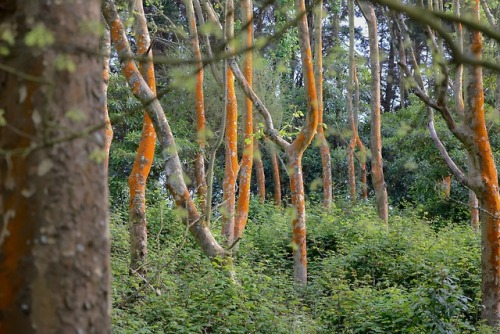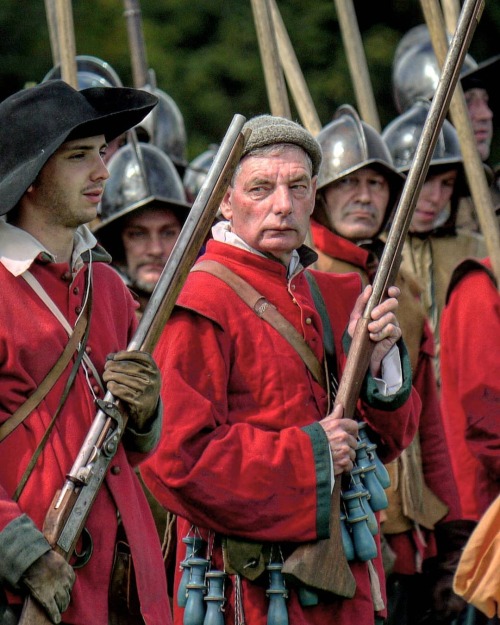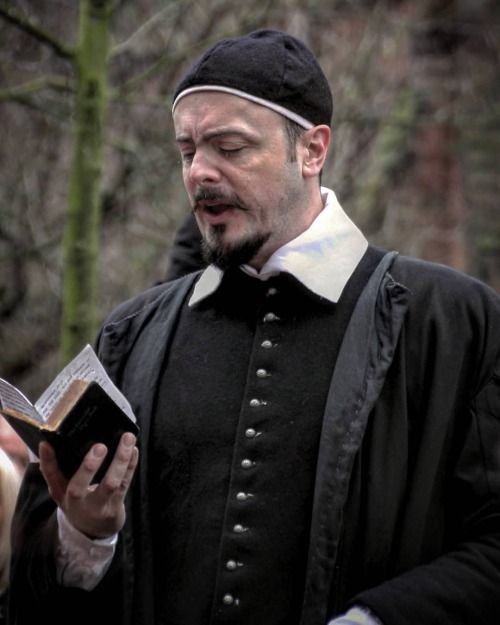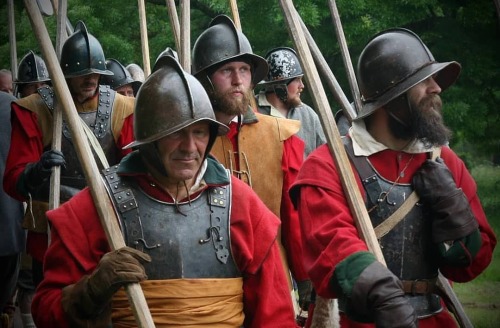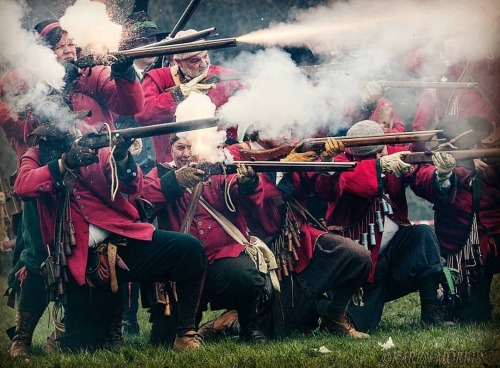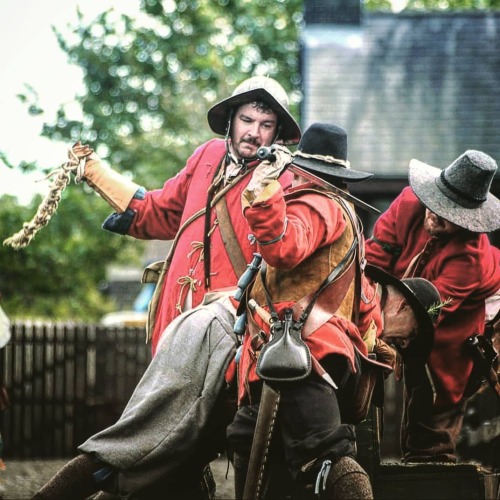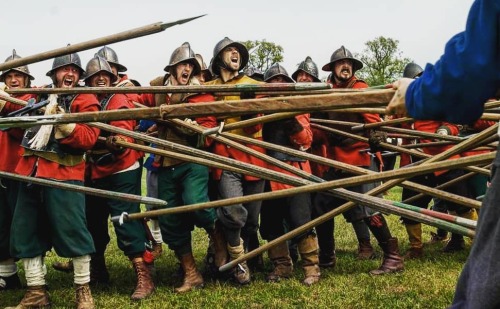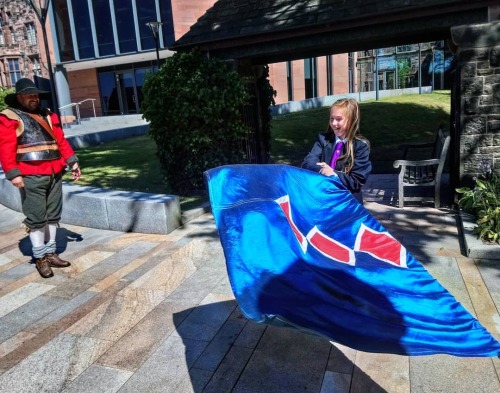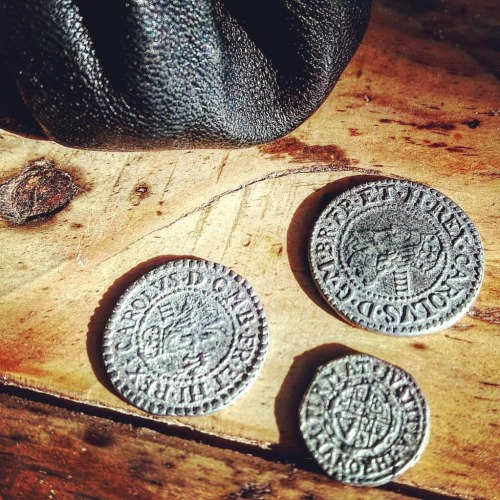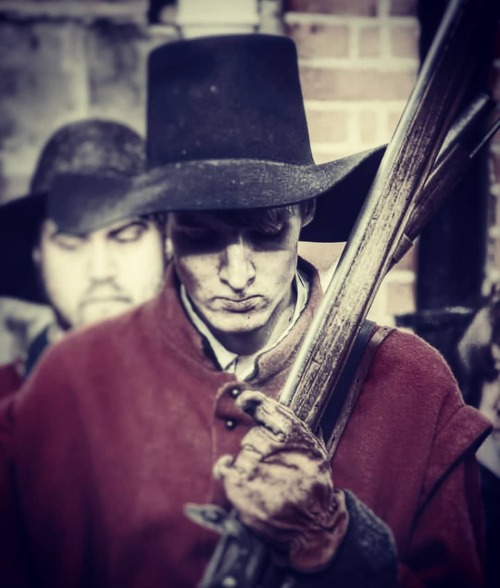#photoaday
Daily photo 365, 12.31—At the begining of the year I started with a series of faceless self portraits to represent how I see myself, and to finish off the year, here is an image of how I look to others for —
posted on Instagram - https://ift.tt/39upH4H
Post link
In the 17th Century, if you heard drums then it would be almost certain that they were drums of WAR! ⚔️
.
Drums were not commonly used in music in the period but were closely and clearly associated with the military. They were used to relate orders to large groups of soldiers on noisy battlefields, each time or ‘call’ corresponding to a specific order.
.
Written by William Barriffe in 1638, The Six Calls of War detailed the minimum number of drum calls needed to relay orders to a company or division of soldiers. It is a detailed account of parade ground exercises performed in front of an audience at Merchant Taylors Hall, a popular performance very much along the lines of a modem military display or tattoo. The six calls were The Call, The Preparative, The English March, The Troop, The Battle, and The Retreat.
.
The drummer was a position of responsibility above that of the common soldier and this meant they were paid more, usually a shilling per day, which puts them on a part with a corporal and sometimes a sergeant. They were required to be sober, responsible, and of good character, and they would be expected to carry out additional duties such as parleying with the enemy and travelling into the enemy camp.
.
David Gee
.
#drum #drummer #drumming #drums #drumstagram #music #militarymusic #photoreenactment #reenactment #reenactors #reenacting #reenactorstyle #reenactorslife #reenactorsofinstagram #reenactmentphotography #livinghistory #history #photohistory #historicalreenactment #17thcentury #sealedknot #dailyphoto #photoaday #photooftheday #photoadaychallenge #englishcivilwar #instadaily
https://www.instagram.com/p/B_0yes-n-H_/?igshid=ocuecsxvdty5
Post link
Directions for Musters, published in 1638, described a musketeer’s principle equipment: “The musketier must be armed with a good musket (the barrel of 4 foot long, the bore of 12 bullets in the pound rowling in), a rest, bandelier, head-piece, a good sword, girdle & hangers.” The procedure for loading and firing a matchlock musket and how to organise and manage bodies of musketeers was described in a number of drill books. One of the most popular, running to asix editions between 1635 and 1661, was William Barriffe’s Military Discipline. This drill was based on that developed at the end of the 16th Century in the Netherlands by Prince Maurice of Nassau and it would become the universal drill of the Thirty Years War. The complete matchlock musket drill explained by Barriffe consisted of 60 different movements, each with its own command, of which 30 dealt with the process of loading and firing. Part of the complexity of the drill was due to the need to keep separate the powder and the means of igniting it, the slow-burning match. After firing, reloading was carried out without any further orders.
.
Kate Gray
.
#musket #musketeers #gun #war #battle #drill #drillmanual #photoreenactment #reenactment #reenactors #reenacting #reenactorstyle #reenactorslife #reenactorsofinstagram #reenactmentphotography #livinghistory #history #photohistory #historicalreenactment #17thcentury #sealedknot #dailyphoto #photoaday #photooftheday #photoadaychallenge #englishcivilwar #instadaily
https://www.instagram.com/p/B_yLg6JHw02/?igshid=15eyrf7fhzse
Post link
“Fall on!” Convinced of victory, troops of Parliament’s Eastern Association army break ranks and attack their fleeing Royalist opponents!
.
The Eastern Association was the organisation of counties in the east of England - Essex, Norfolk, Suffolk, Cambridgeshire, and Hertfordshire - that funded and administered an army which eventually became a mainstay of the Parliamentarian military effort towards the end of 1644. Commanded by the Earl of Manchester, whose regiment we reenact, the Eastern Association not only helped shore up Parliament’s war effort but also provided the veteran troops who would form the backbone of the New Model Army and fostered the rise of Oliver Cromwell, who went from raising a volunteer cavalry troop to being King in all but name. Manchester had been one of the chief opponents of the king in the House of Lords and his Eastern Association army enjoyed success in its campaign against the northern forces of the Earl of Newcastle, defeating the Royalists in Lincolnshire, relieving Hull, capturing Lincoln, and then heading north to besiege York and, eventually, helping gain victory at Marston Moor.
.
The tensions and arguments in its ranks between Presbyterians and Independents presaged the coming battle for control of Parliament between the two groups, and the political, religious, and military make-up of the Eastern Association remains a fascinating but sometimes misunderstood aspect of the first English Civil War.
.
Shaun Stothard
.
#easternassociation #parliament #historyofparliament #suffolk #norfolk #hertfordshire #essex #cambridgeshire #war #battle #photoreenactment #reenactment #reenactors #reenacting #reenactorstyle #reenactorslife #reenactorsofinstagram #reenactmentphotography #livinghistory #history #photohistory #historicalreenactment #17thcentury #sealedknot #dailyphoto #photoaday #photooftheday #photoadaychallenge #englishcivilwar #instadaily
https://www.instagram.com/p/B_vo3ZFncW-/?igshid=1kskfpstjse8o
Post link
“The ingenuity and candor of London preachers is famous throughout the whole Kingdom, doth not it further appear, by setting the people at first against the King and his party — and now having raised men’s spirits to a resolution of requiring just and scriptural satisfaction that blood may be avenged, in cry out in your pulpits, of staining the Protestant Religion with the blood of the King.” - Christopher Love
.
Christopher Love was a controversial Welsh Presbyterian preacher during the English Civil War. Not only was he one of the first Puritans to oppose the reforms of Archbishop of Canterbury William Laud but his preaching was so inflammatory that during negotiations with the Royalists in early 1645 Love was locked up by the Commons. In late 1645 he offended the Independents, who on gaining power in the Commons confined him again. He vehemently opposed the execution of King Charles and claimed that it “stained” the Protestant religion. In 1651, he was convicted of treason and sentenced to death. Oliver Cromwell gave Love reprieves of one-month and then one-week but the courts wanted to make an example of him to quash any further trouble from the Presbyterians. On 23 August 1651, he was executed on Tower Hill in London. He would become a martyr to the Presbyterians, who had been defeated by the Independents in the struggle for control of Parliament and were then persecuted after the Restoration.
.
David Swift
.
#sunday #sundayservice #preacher #preaching #religion #photoreenactment #reenactment #reenactors #reenacting #reenactorstyle #reenactorslife #reenactorsofinstagram #reenactmentphotography #livinghistory #history #photohistory #historicalreenactment #17thcentury #sealedknot #dailyphoto #photoaday #photooftheday #photoadaychallenge #englishcivilwar #instadaily
https://www.instagram.com/p/B_tHUncnUXB/?igshid=1jbhh30pej0im
Post link
“These shall have strong, straight, yet nimble pikes of ashwood, well headed with steel and armed with plates downward from the head, at least four foote, and the full size or length of every pike shall be fifteen foot besides the head. These pikemen shall also have good, sharpe, and broade swords (of which Turkey and Bilboe are best), strong scabbards, chapt with iron, girdle, hangars or bautricke of strong leather; and lastly, if to the pikeman’s head peece be fastened a small ring of iron, and to the right side of his back piece (below his girdle) an iron hook, to hang his steele cap upon, it will be a great ease to the souldier, and a nimble carriage in the time of long marches.” - Gervase Markham, The Souldiers Accidence or an Introduction Into Military Discipline (1635)
.
Glenn Johnson
.
#pikemen #pike #soldiers #war #army #photoreenactment #reenactment #reenactors #reenacting #reenactorstyle #reenactorslife #reenactorsofinstagram #reenactmentphotography #livinghistory #history #photohistory #historicalreenactment #17thcentury #sealedknot #dailyphoto #photoaday #photooftheday #photoadaychallenge #englishcivilwar #instadaily
https://www.instagram.com/p/B_qas06njYQ/?igshid=1qz31kcoeiml1
Post link
There’s no smoke without fire - and no musket firing without gunpowder! Nathaniel Nye was a master gunner from Worcester during the English Civil War and gave a recipe for black powder in 1647 of “four parts petre, one part Brimstone and one part Cole", which is four parts potassium nitrate (or saltpetre), one part sulphur and one part charcoal. Some powder used may have been manufactured by simply powdering the three components separately and then grinding them together in a mortar by hand. Larger scale production would be carried out in stamp mills where the powder mixture was pounded in wooden mortars by wooden-headed stamps, which were moved up and down by using horse or water power.
.
Powder was always in short supply, especially for the King’s forces. In his capital of Oxford, two corn mills were converted to produce gunpowder (helping precipitate a food shortage) and by the summer of 1643 a munitions plant established in the Schools at Oxford was supplying a range of military stores including gunpowder, slow match, bullets, pikes and bills. However, production was limited: in July 32 barrels of gunpowder were delivered and the following month a further 15 but it was not until November that a further 50 barrels were supplied. As there were no natural deposits of saltpetre in the country, Oxford, like all other gunpowder mills in England, was dependent upon supplies manufactured by a slow and unpleasant process from human and animal waste. Despite the best efforts of the king’s ordnance officers at Oxford, production in the city was not sufficient to meet the demand for arms and ammunition.
.
Karen Morris
.
#musket #musketeers #fire #smoke #gun #gunpowder #blackpowder #photoreenactment #reenactment #reenactors #reenacting #reenactorstyle #reenactorslife #reenactorsofinstagram #reenactmentphotography #livinghistory #history #photohistory #historicalreenactment #17thcentury #sealedknot #dailyphoto #photoaday #photooftheday #photoadaychallenge #englishcivilwar #instadaily #historyhit #oxford #oxforduniversity
https://www.instagram.com/p/B_n4tGXHqQI/?igshid=1cojwa9ic9tya
Post link
Our 900th post!!! In the English Civil Wars, military justice was often rough justice - a musketeer is whipped with knotted rope by his compatriots for swearing illegal oaths and gambling.
.
In April 1643, Oliver Cromwell had two deserters from his own cavalry troop whipped in the marketplace at Huntingdon and turned away as ‘renegadoes’, and the idea of military discipline could be an alien concept to the hastily cobbled-together armies of the civil war, which were often made up as much by society’s undesirables as they were motivated soldiers. Even their officers could be powerless to stop them. At Adwalton Moor on 29 June 1643, Sir Thomas Fairfax watched as four of his own soldiers plundered the corpse of the Royalist Colonel George Heron in the midst of battle, but he recorded with satisfaction their death from an enemy cannon-shot.
.
On 9 November 1642, Parliament laid down 'The Laws and Ordinances of War established for the better conduct of the Army’. This military code forbade everything from duelling to theft, from killing a surrendering enemy to 'pillaging without licence’.
.
Carl Pedley
.
#whip #whipping #discipline #punishment #army #soldiers #photoreenactment #reenactment #reenactors #reenacting #reenactorstyle #reenactorslife #reenactorsofinstagram #reenactmentphotography #livinghistory #history #photohistory #historicalreenactment #17thcentury #sealedknot #dailyphoto #photoaday #photooftheday #photoadaychallenge #englishcivilwar #instadaily
https://www.instagram.com/p/B_lVtiWnex-/?igshid=ml82pnf20tpk
Post link
We’ve talked a lot recently about the ‘push of pike’ and this is as close as we get to the press of pike divisions in the midst of battle - it can be quite intense in the middle of all that, let us tell you!
.
@photosm_stephen_moss
.
#pike #pikemen #battle #war #fight #photoreenactment #reenactment #reenactors #reenacting #reenactorstyle #reenactorslife #reenactorsofinstagram #reenactmentphotography #livinghistory #history #photohistory #historicalreenactment #17thcentury #sealedknot #dailyphoto #photoaday #photooftheday #photoadaychallenge #englishcivilwar #instadaily
https://www.instagram.com/p/B_gKB31HUQT/?igshid=91uxql0wtvnx
Post link
Musketeer Kel keeps his match burning during an event at Peterborough Cathedral by gently blowing on it. ‘Slow match’ was thin hemp or flax cord that had been soaked in a solution containing saltpetre – otherwise known as potassium nitrate and commonly extracted from urine – which would burn slowly and steadily. It was estimated at the time that a single soldier on guard duty would burn through a mile of match in a year. As well as being almost useless when it was raining, musketeers who were careless about their match and gunpowder could easily find themselves scattered over a wide area. The rise of the flintlock, which ignited its gunpowder with a piece of flint scraped along a metal plate, gradually saw the matchlock replaced though it persisted well into the 1700s. During the English Civil War, flintlocks were mostly used for guard duty and for soldiers guarding powder stores where burning match might cause a problem.
.
#musket #musketeers #match #slowburn #photoreenactment #reenactment #reenactors #reenacting #reenactorstyle #reenactorslife #reenactorsofinstagram #reenactmentphotography #livinghistory #history #photohistory #historicalreenactment #17thcentury #sealedknot #dailyphoto #photoaday #photooftheday #photoadaychallenge #englishcivilwar #instadaily
https://www.instagram.com/p/B_W9u_2n8I7/?igshid=ej7knu9o4pc0
Post link
“…after they have given their first thrust with their pikes and being come to join with their enemies front to front and face to face, and therefore the use and execution of the pikes of the foremost ranks being past, they must presently betake themselves to the use of their swords and daggers …the nearness and press being so great.” - Sir John Smythe, Certain Discourses Military, 1590
.
In a ‘push of pike’, pike divisions could be up to six deep and each man pressed on the one in front, so sometimes the formations would crush against each other and many pikemen would have to fight in close melee combat. The Italians referred to this as 'Bad War’ but, by the time of the English Civil Wars, pike pushes were relatively rare as the musket came to dominate the battlefield.
.
@johnbeardy
.
#pike #pikemen #battle #war #combat #pushofpike #photoreenactment #reenactment #reenactors #reenacting #reenactorstyle #reenactorslife #reenactorsofinstagram #reenactmentphotography #livinghistory #history #photohistory #historicalreenactment #17thcentury #sealedknot #dailyphoto #photoaday #photooftheday #photoadaychallenge #englishcivilwar #instadaily
https://www.instagram.com/p/B_TXDNDn-EB/?igshid=srethyqxiov
Post link
We love teaching kids about history, that’s why we’re unveiling our FREE education and activity packs this week, the first of which will be available for download from our website tomorrow. As well as exploring the causes of the English Civil War and tying in to Key Stage 3 of the National Curriculum, it will include fun activities to see out lockdown days away from the classroom!
.
#education #lockdownlearning #lockdownlessons #school #learning #teacher #teachers #teachingfromhome #freelearning #photoreenactment #reenactment #reenactors #reenacting #reenactorstyle #reenactorslife #reenactorsofinstagram #reenactmentphotography #livinghistory #history #photohistory #historicalreenactment #17thcentury #sealedknot #dailyphoto #photoaday #photooftheday #photoadaychallenge #englishcivilwar #instadaily
https://www.instagram.com/p/B_Mn1MhHwEw/?igshid=1bwqk4zwwd26r
Post link
A soldier’s meagre recompense: the pay for an ordinary Parliamentarian soldier during the #englishcivilwar was 8 pence a day. This is a fourpence, thruppence and a penny coined in the 1630s. But you’d be unlikely to see the full amount though - deductions were made for your clothes, shoes, arms, food and lodging (soldiers serving in Dublin in 1641 received only one pence out of their four shillings and eight pence weekly pay after deductions) and pay was usually weeks, if not months, in arrears and proper payment of their wages was a constant demand of Parliamentarian soldiers.
.
#pay #coins #money #photoreenactment #reenactment #reenactors #reenacting #reenactorstyle #reenactorslife #reenactorsofinstagram #reenactmentphotography #livinghistory #history #photohistory #historicalreenactment #17thcentury #sealedknot #dailyphoto #photoaday #photooftheday #photoadaychallenge #englishcivilwar #instadaily
https://www.instagram.com/p/B_JCLucnZeu/?igshid=r841jvn8bo5x
Post link
“In March, in Motion, troop or stand, Observe both Leader and right hand:
In silence note in what degree
You in Body, paced be:
That so you may with more trouble Know where to stand and when to double” - from The Grounds of Military Discipline (1612)
.
Between the death of Elizabeth I in 1603 and the formation of the New Model Army in 1645, Englishmen penned more than 90 books on military subjects, including lengthy treatises on the art military, infantry drill manuals, books on personal combat, military histories, and pamphlets on the laws of war, many of which were written with the intention of moulding the “complete” or “perfect” soldier. A complete soldier was usually a gentleman who could read and write, and who gained his experience either by volunteering for service abroad in the wars raging in Europe or by practising the military arts at the local muster ground or military yard. Some argued, however, that experience alone was not enough to make a complete soldier and soldiers should also take time to study and read, gleaning what they could from the wisdom and experience of others.
.
@eryzlie
.
#military #militarylife #soldiers #books #learning #drill #photoreenactment #reenactment #reenactors #reenacting #reenactorstyle #reenactorslife #reenactorsofinstagram #reenactmentphotography #livinghistory #history #photohistory #historicalreenactment #17thcentury #sealedknot #dailyphoto #photoaday #photooftheday #photoadaychallenge #englishcivilwar #instadaily
https://www.instagram.com/p/B_Hias4nW_J/?igshid=l8roeq2wgmdt
Post link
“Wet weather and want of provisions will make Captain Cold and Captain Hunger much injure the army” - A Perfect Diurnal, 1650
.
Life as an English Civil War soldier could be pretty miserable. Lack of provisions constantly affected armies and if they couldn’t live off the land or steal from local people then they could face a sorry situation. Some could merely look forward to meals of turntip tops while those caught up in devastating sieges such as Colchester in 1648 were forced to eat horses, dogs, and even rats. Analysis of diaries of the time suggests that most soldiers during the first civil were in some form of constant starvation, as they could not fulful their dietary needs. They, in turn, led to unrest and mutiny, with several officers suddenly finding their men unwilling to follow orders until their bellies or their purses were filled.
.
DMC08 on Flickr
.
#food #diet #photoreenactment #reenactment #reenactors #reenacting #reenactorstyle #reenactorslife #reenactorsofinstagram #reenactmentphotography #livinghistory #history #photohistory #historicalreenactment #17thcentury #sealedknot #dailyphoto #photoaday #photooftheday #photoadaychallenge #englishcivilwar #instadaily
https://www.instagram.com/p/B_FT17_nx9W/?igshid=1hs5loqctqslf
Post link
“They hate all gentlemen, especially such as serve his Majesty at sea.”
.
A Devon fisherman waits on a rock in the surf, contemplating the fact that his livelihood under threat now that the civil war has come to his county. Although far from London and Oxford, Devon found itself on the front lines in the first English Civil War with its major towns declaring for different sides - Plymouth for Parliament, Exeter for the King - while its major industries of tin-mining, wool production, and fishing could be turned to either side’s war effort.
.
In Devon in the 1620s, there were at least 5,000 working mariners - well over five per cent of the adult male population. Fishing was integral to Devon’s economy and seafaring men, as a whole, we’re among the most determined opponents of the King. This could have been for a number of reasons; Mark Stoyle’s ‘Loyalty And Locality’ suggests the fishermen’s support for Parliament may come from their being exposed to other cultures and new ideas from their journeys, as well as their high rates of literacy, their lingering resentment over their treatment during King Charles’ ill-fated attack on Spain in 1628, their awareness of the dangerous strength of the Catholic Habsburg Empire, and the Crown’s lack of support for their communities during economic hard times.
.
#fish #fishing #beach #sea #water #waves #sun #mariner #photoreenactment #reenactment #reenactors #reenacting #reenactorstyle #reenactorslife #reenactorsofinstagram #reenactmentphotography #livinghistory #history #photohistory #historicalreenactment #17thcentury #sealedknot #dailyphoto #photoaday #photooftheday #photoadaychallenge #englishcivilwar #instadaily
https://www.instagram.com/p/B_BQy5GnFHd/?igshid=14eavoy3voge
Post link
“At the South end of Preston towards Wiggon is a Bridge, called Ribble Bridge, which the Scots stoutly kept, being much secured from our shot by flanking hedges; but Lancashire foot drew out their Pikes and charged over the Bridge and by push of Pike gallantly vanquished the resolute opposers, and made way for our horse, who did great execution for two miles, tooke Duke Hamilton’s trunks and plate, but the night made us all draw back to Preston.” - account from the first day of the Battle of Preston in a letter from Major John Sanderson to his father, 20 August 1648
.
Throughout 1648 Sanderson, an officer in the parliamentary army serving in Colonel Lilburne’s Regiment of Horse, recorded his daily activities on the blank pages of an almanac. This diary has survived to provide a unique insight into the life of a cavalry officer in the second Civil War. The text of the diary was first published in 1921 and Sanderson’s terse diary entries give a first hand account of events in the north of England in 1648 which led in January 1649 to the execution of King Charles I.
.
The second Civil War, which lasted from April to August 1648, was a short conflict that pitted former allies, the Scottish and Parliamentarian English, against each other after the Scots sided with King Charles, who was still a prisoner of Parliament. The five-day battle of Preston was a shambolic defeat for the Scottish, while effectively sealing the king’s fate.
.
@davevforce
.
#pike #battle #mist #fog #weapons #photoreenactment #reenactment #reenactors #reenacting #reenactorstyle #reenactorslife #reenactinglife #reenactorsofinstagram #reenactmentphotography #livinghistory #history #photohistory #historicalreenactment #historicalcostume #17thcentury #sealedknot #dailyphoto #photoaday #photooftheday #photoadaychallenge #historyhit #englishcivilwar #instadaily #englishheritage #nationaltrust
https://www.instagram.com/p/B-5soZHnrRy/?igshid=dxlnsm2bmljo
Post link
“O, but what hope’s left? There is hope. There is hope. Were there not, yet order it, that there may be hope. And then harken what God will speak, for his heart and mouth will speak peace unto his broken people.” - sermon preached by Robert Harris to the House of Commons, 25 May 1642
.
For Christians, Easter has always been founded on a message of hope and rebirth. This message, regardless of your own beliefs, feels more important than ever right now. In May 1642, people had no real idea of how quickly things would unfold and how much their way of life would be changed by the still-simmering conflict. Yet even in these darkest of days there remained hope, not as a naive bandage covering things over but as a support, a guide, a light in the darkness. Whatever our religious persuasion, or otherwise, let us all take a moment to focus on hope and give thanks for all those whose tireless work puts them in harm’s way.
.
Stuart Bulman
.
#easter #hope #photoreenactment #reenactment #reenactors #reenacting #reenactorstyle #reenactorslife #reenactorsofinstagram #reenactmentphotography #livinghistory #history #photohistory #historicalreenactment #17thcentury #sealedknot #dailyphoto #photoaday #photooftheday #photoadaychallenge #englishcivilwar #instadaily
https://www.instagram.com/p/B-4RmxlHbYt/?igshid=6xaqyo17vhth
Post link






